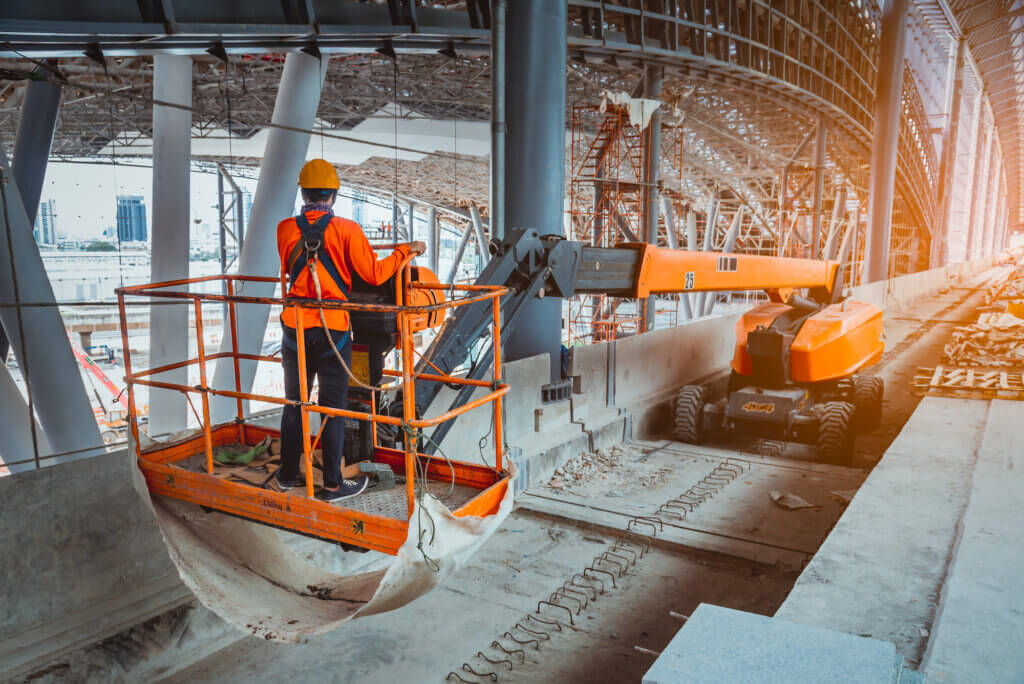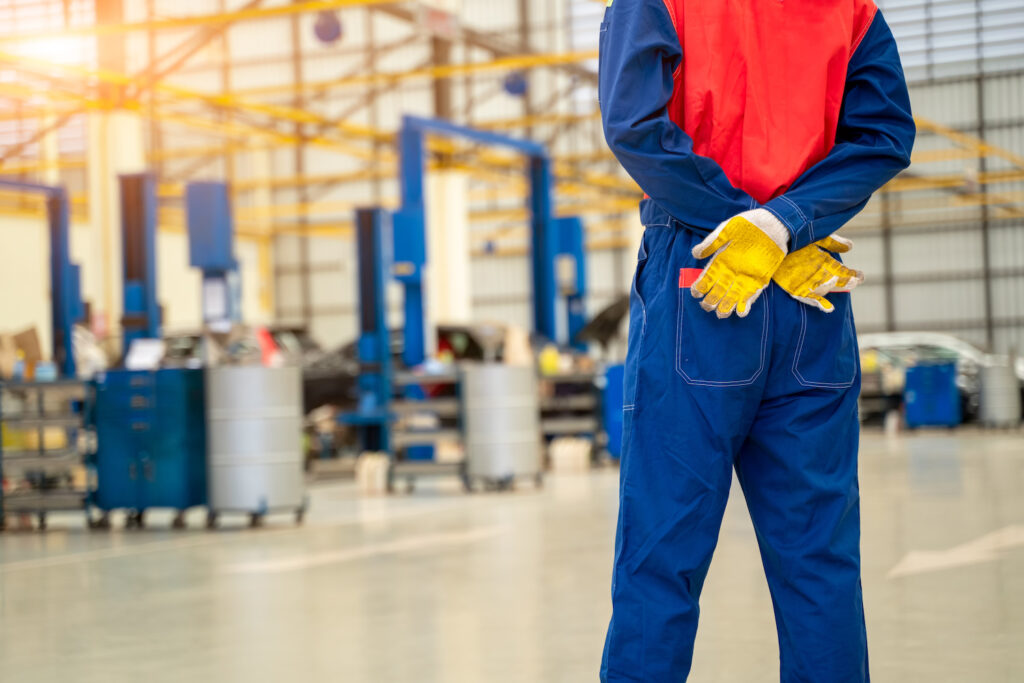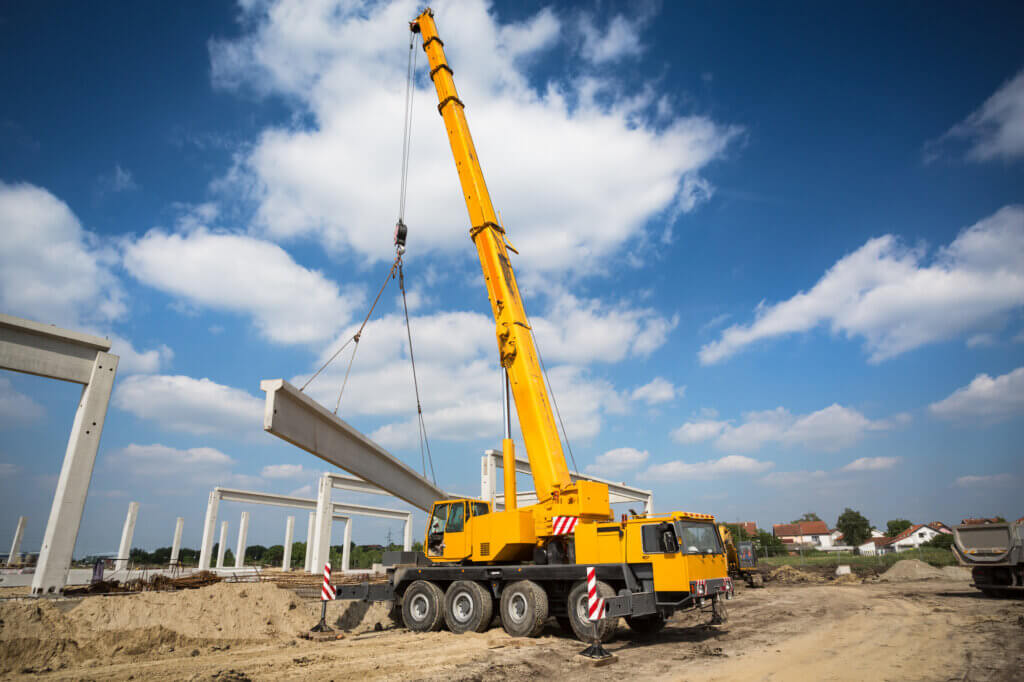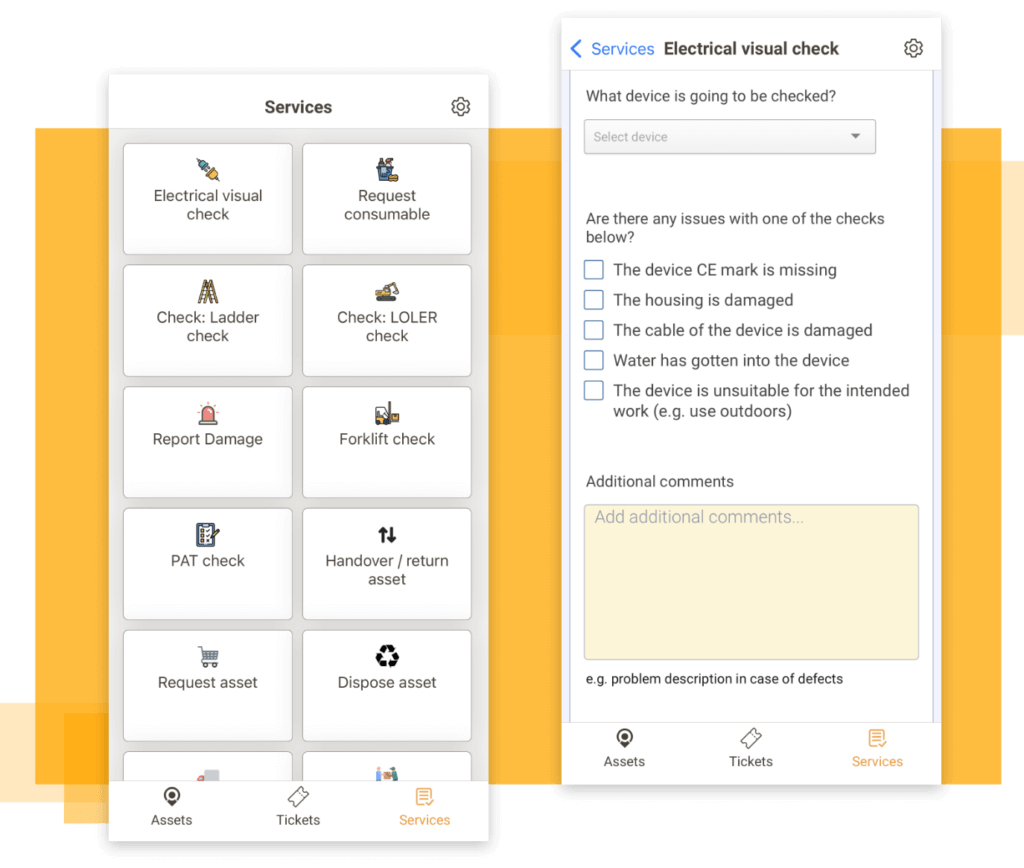The acronym LOLER stands for Lifting Operations and Lifting Equipment Regulations, which place obligations on businesses and individuals who operate or own equipment for lifting. LOLER inspection and regulations apply to organizations whose staff use lifting equipment. Regardless of who the equipment belongs to. Much of the time, this equipment constitutes work equipment.
Therefore, PUWER, or the Provision and Use of Work Equipment Regulations, are applicable as well. Furthermore, this includes maintenance and inspection. Any lifting operation involving lifting equipment has to be planned correctly by a suitable person. It should also be performed safely while being supervised closely.
Key Takeaways
- A LOLER inspection is a thorough examination of lifting equipment by a qualified person as defined by the Health and Safety Executive (HSE).
- LOLER testing and regulations apply to all organizations whose employees use lifting equipment.
- Although the LOLER guidelines are not legally binding, they have been determined under section sixteen of the HSW Act (Health and Safety at Work Act).
We did the research for you and compiled a list of the best 15 equipment management software solutions.
What Is a LOLER Inspection?
During a LOLER inspection, a competent person thoroughly examines equipment that is used for lifting. The HSE (Health and Safety Executive) offers specific guidelines about who is qualified to do this. Occasionally, a LOLER lifting equipment inspection is also called an insurance inspection.
For lifting equipment, this process is similar to a vehicle MOT. Therefore, it is a standard examination to check that the machinery can be used safely. Of course, it is against the law to drive vehicles without a valid MOT. In the same way, it is against the law to operate lifts without an up-to-date LOLER inspection certificate.
Moreover, LOLER requires lifting equipment to be suitable for tasks, fit to use, marked appropriately, and subject to thorough examinations periodically. A record of every LOLER lift inspection must be stored, and the relevant authorities must be informed if any faults are discovered. Such faults should be reported to people responsible for the equipment, too.

The Background to LOLER
In 1998, LOLER came into law, replacing the 1961 Construction and Use Lifting legislation. The previous regulations required all equipment for lifting to undergo overload tests at four-year intervals. Furthermore, the older rules were updated because some kinds of lifting machinery can be damaged during standard overload tests.
A LOLER forklift inspection and lift inspection on the other hand, which involve thorough annual and bi-annual examinations, are less rigorous. As a result, they do not impact the machinery’s lifespan. In addition, because they can be carried out more frequently, they better ensure the lifting equipment’s performance.
Staying ahead of the requirements for safety inspections without proper tools takes plenty of time and effort. Flexible rules, pre-configured and custom inspections and powerful automations ensure a flawless operation of your assets.
Understanding Lifting Operations and Lifting Equipment
LOLER’s 8(2) regulation describes lifting operations as operations related to the lowering or lifting of loads. ‘Loads’ are lifted item(s), which can be one person or also several people. Lifting equipment is the machinery used to lift and lower loads. This encompasses attachments used to fix, support or anchor the equipment, and other lifting accessories.
Here are some examples of equipment for lifting:
- Hoists for patients.
- Overhead cranes and runways.
- Cranes attached to vehicles and vehicle tail lifts.
- Lifts for motor vehicles.
- Lifts for passengers and goods.
- Cleaning cradles for buildings and also suspension equipment.
- Lifting accessories.
- Forklifts and telehandlers.
Lifting Accessory Examples
A lifting accessory is used to fix loads to lifting machinery, and create a connection between them. Here are some common examples:
- Rope or fibre slings.
- Multiple or single leg chains.
- Hooks.
- Eye bolts.
- Spreader beams.
- Vacuum and magnetic devices.
LOLER’s Approved Practice Code contains more examples of machinery covered by the legislation. There are a few key exceptions that LOLER does not apply to though, such as:
- Doors for roller shutters.
- Pallet trucks, which have minimal consequences if loads fall off.
- Fall arrest ropes.
- Escalators.
- Dental chairs.
- Tipper trucks.
Nonetheless, when used in the workplace, this equipment needs to have safety maintenance. Moreover, it might qualify for a PUWER inspection.

LOLER Inspection Checklist
LOLER certificates are written reports that are produced after inspections take place. Essentially, these reports are a LOLER inspection checklist that include:
- The date of the inspection and also the next required inspection.
- In addition, the machinery checked, including the serial number and make.
- Details about the examinations performed.
- Information about the person who performed the inspection.
- Faults or safety problems discovered in any equipment.
- Information about renewals, alterations, or repairs needed to rectify faults — also deadlines to which this work should be completed.
- And most importantly, a confirmation about whether items are dangerous to use.
How LOLER Inspections Ought to Be Done
Lifting machinery has to be carefully checked in a range of circumstances, such as:
- Prior to its initial use (if no declaration of conformity was made during the previous year).
- If it needs to be installed, or re-installed, at a different location.
- In addition, if it has exposure to corrosive conditions, which could compromise its safety.
A LOLER inspection sheet template should be used to record details of examinations. Moreover, a LOLER weekly inspection form is helpful for examinations that need to take place more regularly. As already stated, if faults are discovered, the appropriate authority (either the HSE for industrial premises, or local authorities for other premises) should be informed. However, the people using the machinery, and those who rent it out to others, should be notified as well.
Machinery That Requires LOLER Inspections
Here’s a quick summary of equipment that needs a loler inspection:
- Lifts for goods.
- Lifts for passengers.
- Escalators.
- Scissor lifts.
- Dumbwaiters.
- Cherry pickers.
- Patient hoists and other mobility lifting aids.
Are LOLER Inspections a Legal Obligation?
LOLER (in line with its amendments) is backed by the HSE’s guidelines regarding the use of lifting machinery. Although these guidelines are not legally binding, they have been determined under section sixteen of the HSW Act (Health and Safety at Work Act). As such, they are afforded priority status, as explained on page two of the introduction.
While LOLER has a broad application, lifting machinery used on boats tends to be exempt because merchant shipping laws make safety provisions for this equipment. Moreover, lifting machinery and accessories are often governed by the HSE’s Machinery Supply Regulations.
Prior to being sold or used, this type of machinery must be assessed for conformity and labelled properly. A DoC (Declaration of Conformity) has to be produced for each item of equipment, which might avoid the requirement for a LOLER inspection. Usually, this happens when the equipment’s safety is not reliant on its assembly or installation conditions.
Who Should Perform LOLER Inspections?
LOLER inspections should be performed by competent people, who have received loler inspection training after completing a loler inspection course. These people must be lifting machinery experts, who can detect faults and evaluate their significance. Regarding the safe, ongoing use of the machinery.
Furthermore, these people have to be unbiased, so they can assess the equipment objectively. Most importantly, with no vested interests. For this reason, third-party contractors should be hired to carry out loler inspections, wherever possible. This way, there will be no grounds to question the legitimacy of inspections, if accidents occur in the workplace.
The Services Offered by LOLER Inspection Companies
LOLER inspection companies in the UK offer comprehensive services, encompassing the whole field of loler certification. Frequent, thorough inspections are the best way to achieve compliance. So, it is worth doing some research to find a reputable provider.
The leading companies can inspect hoists, cranes, handling equipment, garage equipment. As well as access equipment, patient hoists, forklift trucks and lifting accessories. These services can be completed on-site, or at the inspection company’s testing facility, for a fast, efficient service. Most companies upload the test certificates and results to an online web platform, after the inspections are completed.
What Is the Ideal LOLER Inspection Frequency?
Different types of equipment have different periods for inspection. Therefore, it is vital to know when each kind of machinery is due an examination. Employer guidelines from the HSE outline the frequency with which various categories of lifting machinery should be examined:
- LOLER states that lifting machinery and related accessories for lifting people should be inspected at six-month intervals. For example, passenger lifts, equipment for window cleaning and also access platforms.
- Secondly, the same six-month inspection period also applies to other lifting accessories, such as fixing and anchoring equipment.
- Furthermore, with any other lifting machinery, inspections ought to be carried out every year. Examples of this machinery include lifting jacks, forklift trucks and cranes. To sum up, equipment that is used to lift objects, not people.
The inspection schedules listed above might be changed using a written examination scheme, due to workplace environments and/or the condition/use of equipment.

The Importance of LOLER Inspections
All businesses that undertake lifting operations, or that provide lifting machinery to other parties, have to manage the risks to prevent any damage and injuries. LOLER is enforced by health and safety officials, who can request copies of lifting equipment reports without notice.
Therefore, it is essential for businesses to keep detailed records of this data by using equipment management software. Moreover, if an employee of a business injures themselves whilst using lifting machinery, that business can be prosecuted. This case occurs if it failed to follow regulations.
Suffice to say, whenever lifting machinery is used in the workplace, the HSE’s Approved Practice Code for LOLER should be closely adhered to. A LOLER inspection will highlight any equipment faults before they develop into serious problems, thereby prolonging the lifespan of equipment.
With ToolSense we no longer have duplicated data stored in Excel sheets but a central and synchronized system that contains all relevant information and documentation. We save a lot of time and therefore I have an immediate positive economic impact. In addition to that we wanted to stay in charge of our own data which required a manufacturer-independent solution.

LOLER Checks With ToolSense
From reminders to creating inspection reports, ToolSense guides you through the entire process, making every single step easier for you and your employees. Once the LOLER inspection is finished, the equipment inspection software creates a report in the folder related to your asset, where it can be accessed at all times.
If inspections are carried out internally, proper inspection forms and checklists are essential to ensure the inspection was properly conducted. In the ToolSense Asset Operations Platform, we have all kinds of safety inspections—like ladder checks, PAT testing, LOLER checks and more—pre-configured. Additionally, you can easily build your own safety inspections with our custom form editor.

FAQ
LOLER inspections are in-depth examinations of lifting machinery. Used to ensure that it is safe to use and will not cause injuries. LOLER requires relevant machinery to be suitable for tasks, fit to use and marked appropriately — with damages and maintenance work recorded.
Typically, for passenger lifts, prices start at about £75 — while hoists and stairlifts cost about £25 and £50 respectively. Nonetheless, these costs differ from one site to another, and depend on the location’s physical layout and number of units, etc.
All businesses must arrange LOLER inspections, if they use lifting machinery on their premises — irrespective of whether they own the machinery. To be LOLER compliant, the lifting machinery must pass a thorough inspection by a competent individual. It must have a Safe Working Load label, and a label highlighting any factors that could make the equipment unsafe.
To adhere to lifting machinery regulations, equipment for lifting must have a LOLER certificate following a thorough inspection. These inspections should be performed within the timeframes listed below.
Six months: For lifting machinery/accessories used for lifting people.
Six months: For other types of lifting accessories.
One year: For other types of lifting machinery.
LOLER states that lifting machinery must be inspected by competent individuals. Competent individuals are people who have the expertise and experience to know what to look for. They ought to be capable of spotting faults that could cause hazards. Often, insurance firms provide competent inspectors, or arrange for external, impartial contractors to carry out inspections.

